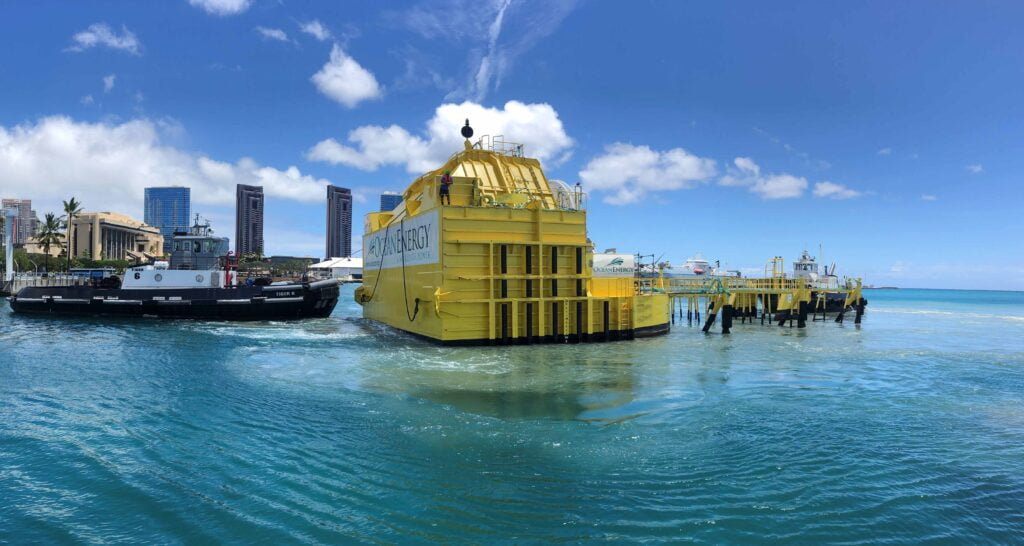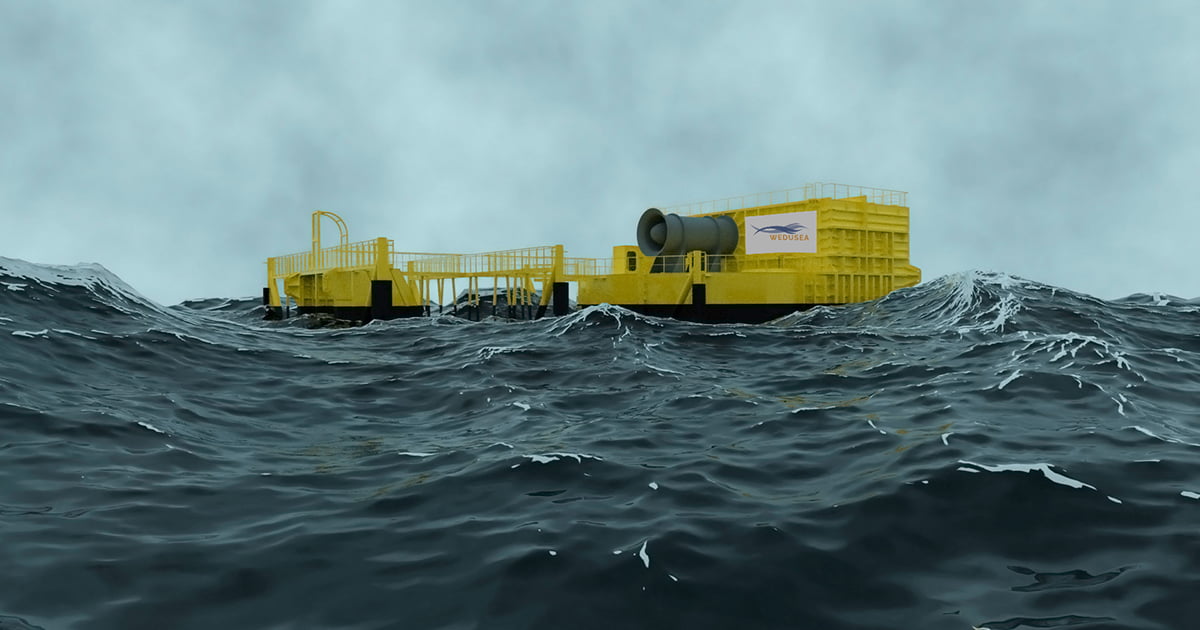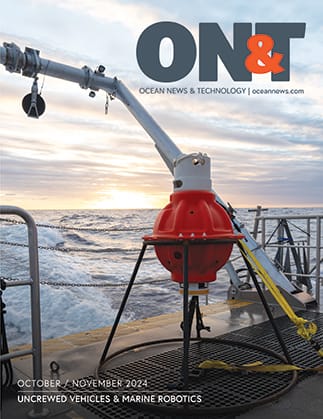WEDUSEA is a pioneering collaboration between 14 partners, spanning industry and academia from across the UK, Ireland, France, Germany and Spain. It is coordinated by the Irish company OceanEnergy.
The project is co-funded by the EU Horizon Europe Programme and by Innovate UK, the UK’s innovation agency.
In common with all other Horizon Europe projects, WEDUSEA has undergone a comprehensive independent review by EU appointed external experts following its initial project design period to ensure the technical designs and all plans, budgets and protocols are fully in place and approved.
The green light has now been received from the EU and the project can proceed to its next stage.
The WEDUSEA project will demonstrate a grid connected 1 MW OE35 floating wave energy converter at the European Marine Energy Centre (EMEC) wave energy test site at Billia Croo in Orkney, Scotland. A rigorous technical and environmental demonstration will happen over a two-year period in Atlantic wave conditions.
OceanEnergy has developed the OE35, which is the world’s largest capacity floating wave energy device. Floating on the ocean’s surface, the device incorporates a trapped air volume, with the lower part open to the sea. Wave pressures at the submerged opening cause the water to oscillate and drive the trapped air through a turbine to generate electricity. Electricity generated will be exported to the UK grid via EMEC’s subsea cables.

Prof Tony Lewis, Chief Technical Officer at OceanEnergy, says: “Wave energy is the world’s most valuable renewable resource with around 30TWh of potential annual production waiting to be harnessed. That’s almost ten times Europe’s annual electricity consumption. However, this potential has yet to be fully realized. The project will demonstrate that wave technology is on a cost reduction trajectory and will thus be a stepping stone to larger commercial array scale up and further industrialization. We predict that the natural energy of the world’s oceans will one day supply much of the grid.”
The WEDUSEA project has three phases. The first phase is the initial design and build of a device suited to the ocean conditions at EMEC’s Billia Croo wave energy test site. This will be followed by the demonstration at the site, lasting two years. The final phase will be commercialization and dissemination which sees the capitalization and exploitation of the results.
Matthijs Soede from the European Commission said at the start of the project: “WEDUSEA is set to be a major catalyst for the wave energy industry, unlocking the full potential of this exciting renewable technology.”
Prof Lars Johanning of University of Plymouth added: “The WEDUSEA partnership has worked hard to ensure that all detailed designs and planning are robust, to prove that the project is viable and that the project will be delivered within budget. Now we have received the green light from the EU, it’s all systems go!”
The wave converter build starts in the second half of 2024 and the demonstration at EMEC is expected to begin in June 2025.
The WEDUSEA Partnership Project
WEDUSEA stands for: ‘Wave Energy Demonstration at Utility Scale to Enable Arrays.’
This international partnership comprises the following 14 organizations:
- OCEAN ENERGY (NEW WAVE TECHNOLOGIES LIMITED) – IRELAND
- INNOSEA – FRANCE
- ADVANCED SIMULATION TECHNOLOGIES – SPAIN
- FRAUNHOFER GESELLSCHAFT ZUR FORDERUNG DER ANGEWANDTEN FORSCHUNG EV – GERMANY
- UNIVERSITY COLLEGE, CORK – IRELAND
- GAVIN AND DOHERTY GEOSOLUTIONS LTD – IRELAND
- EXCEEDENCE LTD – IRELAND
- WOOD – IRELAND
- HYDRO GROUP PLC – UK
- THE EUROPEAN MARINE ENERGY RESEARCH CENTRE – UK
- LONGITUDE CONSULTING ENGINEERS LIMITED – UK
- UNIVERSITY OF PLYMOUTH – UK
- INNOSEA LTD – UK
- GREEN MARINE (UK) LTD – UK
Disclaimer: Funded by the European Union. Views and opinions expressed are, however, those of the authors only and do not necessarily reflect those of the European Union or CINEA. Neither the European Union nor the granting authority can be held responsible for them.

